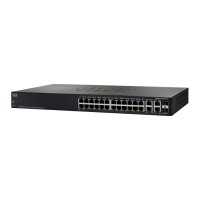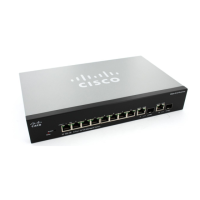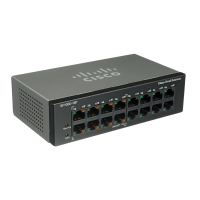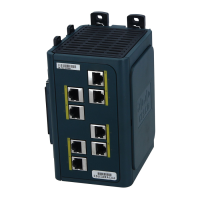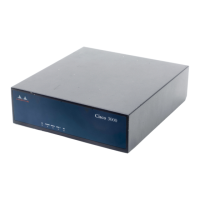Security
Configuring RADIUS
340 Cisco Small Business 200, 300 and 500 Series Managed Switch Administration Guide (Internal Version)
18
• Dead Time—Enter the number of minutes that elapse before a non-
responsive RADIUS server is bypassed for service requests. If the value is 0,
the server is not bypassed.
• Key String—Enter the default key string used for authenticating and
encrypting between the device and the RADIUS server. This key must match
the key configured on the RADIUS server. A key string is used to encrypt
communications by using MD5. The key can be entered in Encrypted or
Plaintext form. If you do not have an encrypted key string (from another
device), enter the key string in plaintext mode and click Apply. The
encrypted key string is generated and displayed.
This overrides the default key string if one has been defined.
• Source IPv4 —(In Layer 3 system mode only) Select the device IPv4 source
interface to be used in messages for communication with the RADIUS
server.
• Source IPv6 —(In Layer 3 system mode only) Select the device IPv6
source interface to be used in messages for communication with the
RADIUS server.
NOTE If the Auto option is selected, the system takes the source IP address
from the IP address defined on the outgoing interface.
STEP 4 Click Apply. The RADIUS default settings for the device are updated in the
Running Configuration file.
To add a RADIUS server, click Add.
STEP 5 Enter the values in the fields for each RADIUS server. To use the default values
entered in the RADIUS page, select Use Default.
• Server Definition—Select whether to specify the RADIUS server by
IP address or name.
• IP Version—Select the version of the IP address of the RADIUS server.
• IPv6 Address Type—Displays that IPv6 address type is Global.
• IPv6 Address Type—Select the IPv6 address type (if IPv6 is used). The
options are:
- Link Local—The IPv6 address uniquely identifies hosts on a single
network link. A link local address has a prefix of FE80, is not routable, and
can be used for communication only on the local network. Only one link
local address is supported. If a link local address exists on the interface,
this entry replaces the address in the configuration.
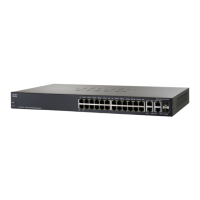
